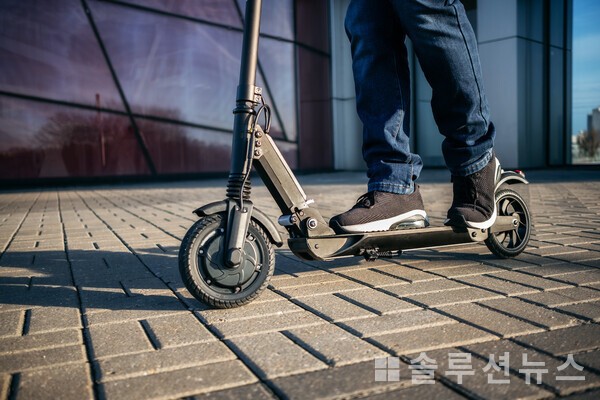The pilot project of ‘Kickboard-Free Streets’, first implemented nationwide by Seoul City, has received a positive response from citizens. The city plans to discuss with the police next month whether to expand the prohibited areas, as improvements in pedestrian environments and increased safety have been verified.
Since May, Seoul City has been operating ‘Kickboard-Free Streets’ in two sections in Mapo-gu and Seocho-gu. As a result, 69.2% of citizens reported that the pedestrian environment improved, and 77.2% stated that the risk of collisions decreased. When asked about the potential expansion of the project, 98.4% of respondents were in favor.

The current pilot operation applies to Hongdae Red Road (1.3 km) in Mapo-gu and the academy district in Banpo (2.3 km) in Seocho-gu, prohibiting the passage of personal mobility devices (PMs) such as electric kickboards and bicycles from noon to 11 p.m. daily. The enforcement is based on Article 2, Clause 19-2 of the Road Traffic Act and Article 2-3 of its Enforcement Rules. Violations on regular roads lead to a fine of 30,000 won and a 15-point penalty, while in children’s protection zones, a fine of 60,000 won and a 30-point penalty are imposed. Currently, a guidance period is in operation.
In August, a survey was conducted with 500 residents over the age of 18 in the pilot areas. The results indicated that 53.2% were aware of ‘Kickboard-Free Streets’, and 80.8% of them learned about it through site fixtures like signs, pavement markers, banners, and electronic boards. Other sources of awareness included media reports (12%) and on-site guidance activities (18.4%).
Only 22.2% of survey respondents reported having experience using electric kickboards, while the remaining 77.8% reported not having any experience.
When asked about changes before and after implementation, citizens reported a decrease in electric kickboard traffic (76.2%), a reduction in unauthorized parking (80.4%), and a decreased collision risk (77.2%). Additionally, 69.2% felt that the pedestrian environment had improved.
Regionally, in Hongdae Red Road, 84% of participants noted a drop in electric kickboard traffic, and 68.4% in Banpo gave the same response. Regarding the reduction of unauthorized parking, 84.8% in Hongdae and 76% in Banpo responded positively. The feeling of reduced collision risk was noted by 87.2% in Hongdae and 67.2% in Banpo. The perception of improved pedestrian conditions was felt by 80.4% in Hongdae and 58% in Banpo, notably higher among those aged 40 and over.
Seoul City reported that 61.1% of citizens who were unaware of the ‘Kickboard-Free Streets’ project also experienced improvements in the pedestrian environment, indicating the tangible effectiveness of the initiative.
With 98.4% of respondents supporting expansion into crowded pedestrian or vulnerable safety areas, only 2.6% (13 individuals) reported inconvenience due to the bans. The city explained that the perception that the benefits of improving pedestrian environments outweigh the inconvenience was confirmed.
Seoul City plans to review operational measures next month with the police, including the expansion of regulation and enforcement areas for personal mobility devices. Based on the consultations, the city will enhance operational policies for banned roads, bolster on-site enforcement personnel, and install additional fixtures.
Citizens pointed out key improvements for future operations, such as strengthening on-site enforcement (56.1%) and installing more signs, pavement markers, and electronic boards (37.2%). The city plans to incorporate this feedback in discussions with the police on the timing of enforcement and assess the need for additional facilities.
Ye Jang-kwon, Director of Seoul City’s Transportation Division, stated that the perception survey showed improvements in pedestrian safety indicators following the restriction of kickboard traffic. He emphasized that Seoul City will strive to create a safe pedestrian environment by systematically managing safety between electric kickboards and pedestrians through specific operational directions.